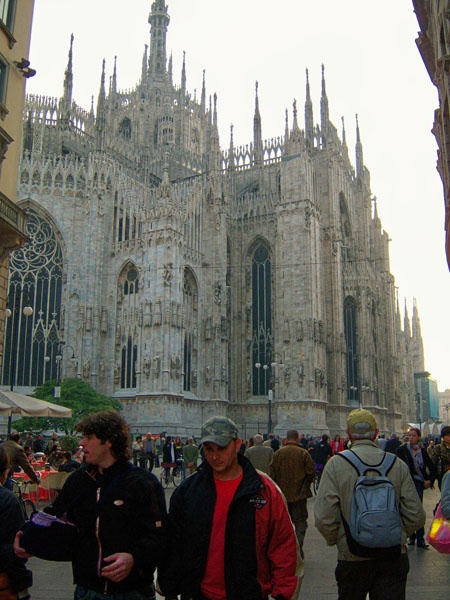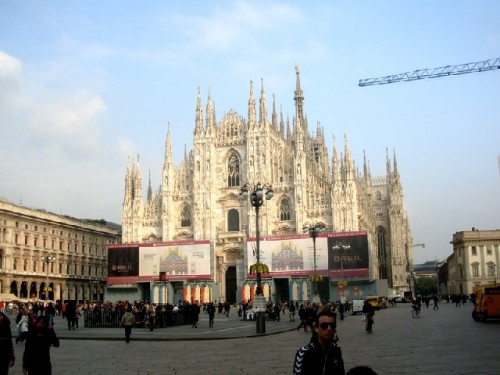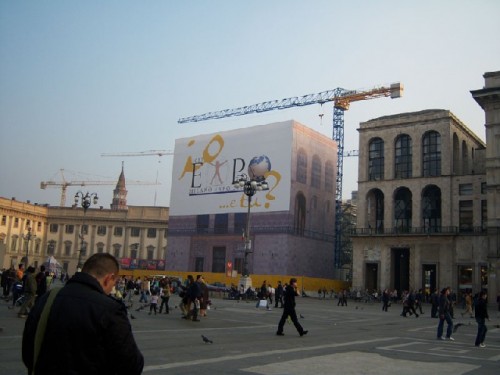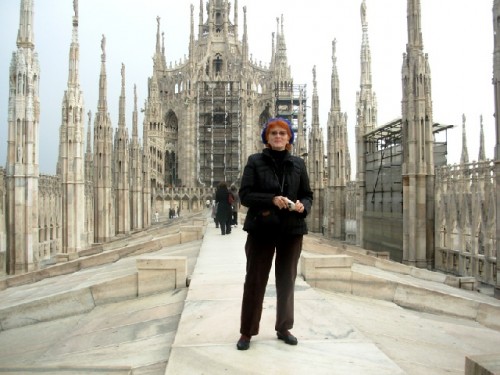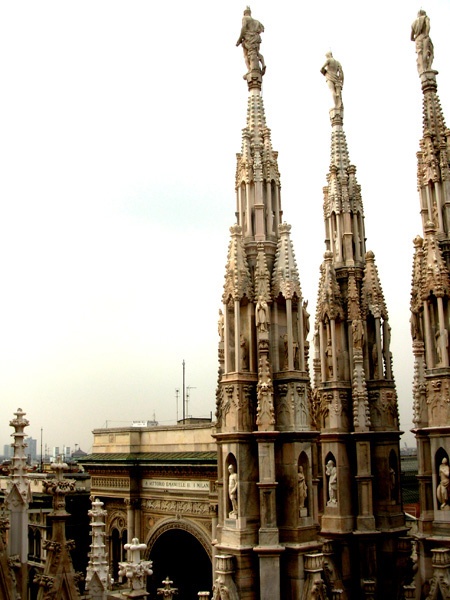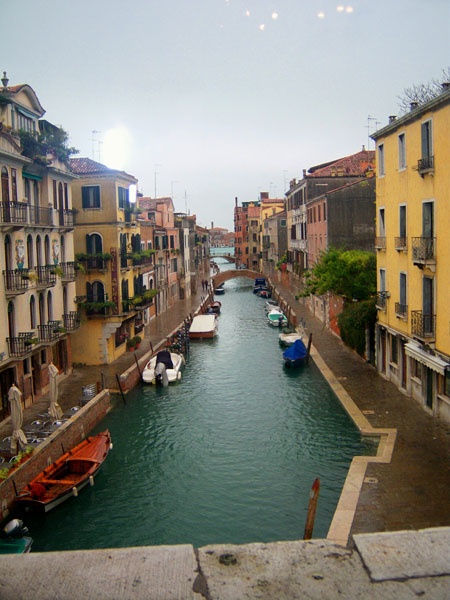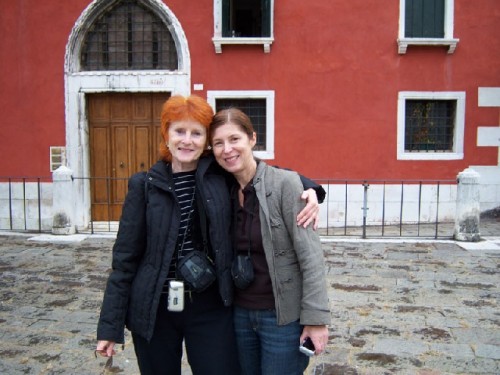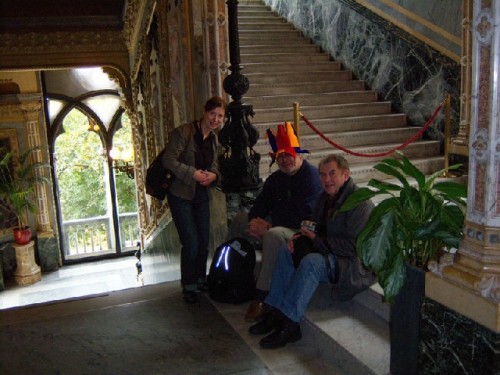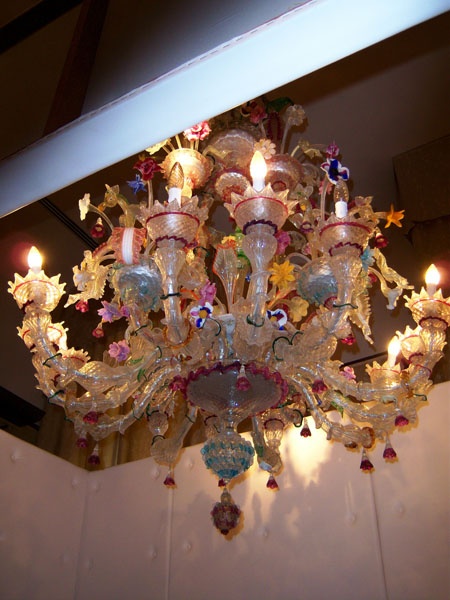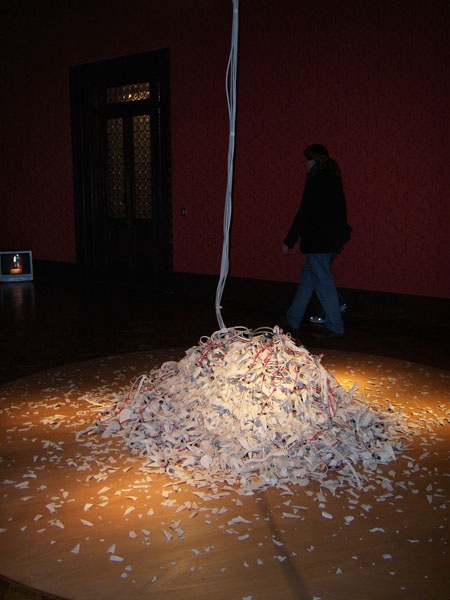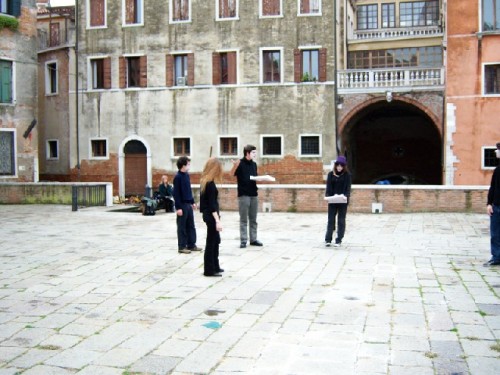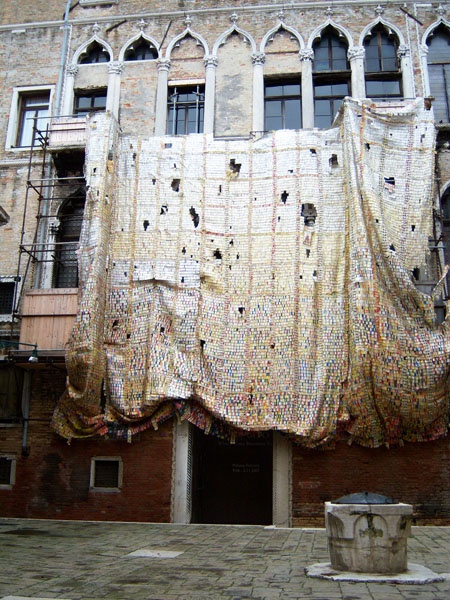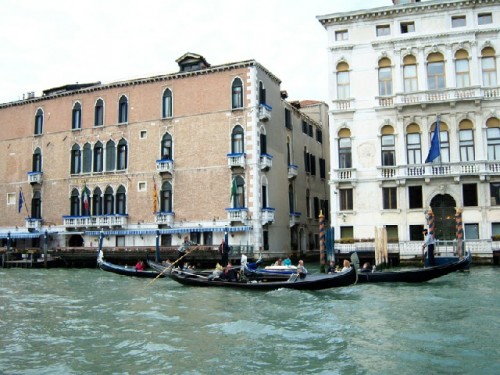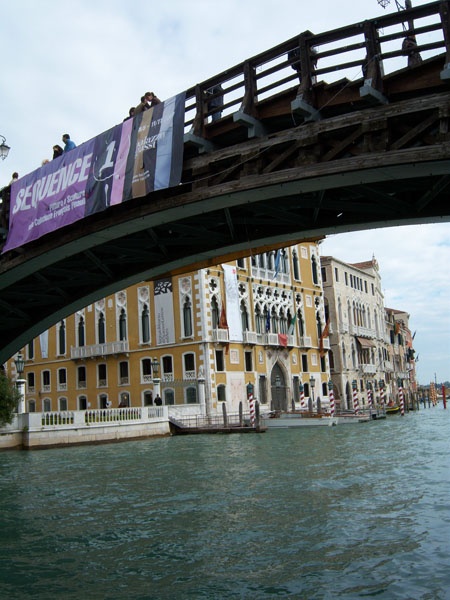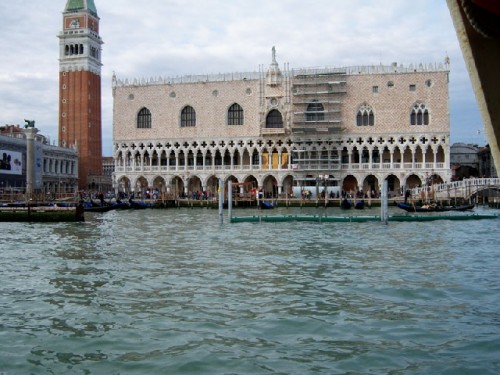Impressions of Northern Italy : Milano, Padova, Venezia
The First Half of a Seven City Journey
By: Astrid Hiemer - Nov 24, 2007
Milan (Milano)
There it was again, this magnificent structure. From afar, it recalled a most elaborate and complex "light brown sugar-house" because one makes associations in order to understand a vision. Walking closer with camera in hand, I was searching for interesting angles to capture parts of the whole, because the entire building was much too large for a small camera lens. Later we read that there are 192 sculptures as part of the Duomo. But were the many small sculptures included in this count, that are placed on top of each of the many steeples, tucked into corners, and angles on and around the rooftop levels? There must be another 100.This was our second visit as we began and ended our three week trip through Italy. We entered the Cathedral and this time it felt more welcoming. The barriers inside in certain parts were still up, but there were not as many people visiting and no church service, so that we could move around freely. I lit a candle "for peace in the world" as I did in all the many churches we visited and I took a few minutes and meditated. The vast gothic structure, which took 150 years to finish, was overwhelming in its beauty.
Back in Milan there was a final day to explore the city and we chose to return to the Duomo. We discovered that the rooftop was open to visitors and decided to walk up the nearly 200 steps. By now, we were in good shape having been on our feet for five to six hours daily. What an exquisite site! The architecture, art and artisan's works and labor contemplated at this height is a sheer marvel. The visitors are free to walk all over the roof, which is made of thick marble plates, and further explore up and down stairways to search out another level, small towers, and corners. Cameras all around us were flashing furiously and we joined in the activity to photograph the cathedral's roof and the city beyond. The rooftop visit remains more vivid, than the experience inside, one of many architectural and artistic wonders that we enjoyed on this trip.
Milan's large avenues house the most expensive brands from around the world. It is known as Italy's fashion capital. We got a taste of it and are current on the latest fashions, even if passing up the gorgeous winter boots I longed for. They were outrageously expensive.
Making hotel reservations from abroad and via the net or phone is a crap shoot. Upon our arrival in Milan we stayed in the smallest room of our trip. It was a reasonably priced boutique hotel, the Roxy. We were treated well, invited to breakfast right away, and the room was available long before the usual check-in time. We badly needed sleep and did not mind the tight quarters for two nights. The Roxy was newly and tastefully renovated in modern Italian design. It proved to be a safe and central location with a half hour walk to the Duomo.
Padua (Padova)
Our next stop was the hotel Sereno in Padua (Padova). The hotel was located on the outskirts of Padua and required a 15 minute bus ride from the train station. The buses were running frequently, but I was tugging along a forty pound rolling suitcase, and swore never again to travel with as much weight. We enjoyed the hotel and used their e-mail facility. There was a spacious room and we took the receptionist's recommendation to eat at Casa Nova. We dined there both evenings, because it was a favorite restaurant of the local people, and experienced our first taste of fresh made pasta and really good dishes.
Our primary reason for being in Padua were the Giotto paintings in the Scrovengi Chapel (Arena Chapel). We were able to purchase an afternoon reservation. Every group of fifty or so visitors is allowed a fifteen minutes stay in this magnificent space. It depicts the histories of Mary and Jesus and the entire ceiling is painted in vibrant deep blue with golden stars. Giotto, (1267-1337) the master muralist, architect, and painter, conveyed the religious themes through touching story-telling. The chapel was built by Enrico Scrovengi and the fresco cycle was finished within a couple of years of labor in 1305. The castle itself had long been destroyed but this magnificent space has survived for 500 years.
Even in late October there are daytime and evening visits and the process is smoothly conducted. The chapel is part of the Museo Civico, an Archeological Museum containing objects from the paleo-Veneto until Roman times. The Museum of Medieval and Modern Art houses paintings and sculptures from the 14th to the 18th Centuries (Giotto, Bellini, Titian, Tintoretto, Tiepolo and a number of lesser known regional artists). We visited the entire museum complex.
Padua, at its center a medieval city, is larger than we expected, because the St. Anthony's Basilica, a 13th Century structure, was far away. The city was quiet on a Sunday, but the large square surrounding the Basilica was full of visitors, mostly from other parts of Italy. St. Anthony is an important Italian saint and his remains are a destination for pilgrims. While some Paduans were taking a Sunday afternoon stroll there were also a few international visitors like us.
Venice (Venezia)
The train ride from Padova to Venezia takes only an hour. The closest town to Venice, still on land, is Maestre, where many people, who work in Venice live, and where the University is situated. We learned that from a Philosophy student, a fellow passenger, who studies at the Mestre. Only recently did we hear from our friend, Jan Nelson, that the oil refineries in Mestre still pollute its surrounding water ways and the Grand Canal of Venice. Unbelievable! The train passes an industrial zone and many large oil containers. Also, we remember the train tracks completely surrounded by water for several minutes before we arrived at the Venice station, Terminal Fusina. From there we took our first vaparetto, the water bus, to the Academia stop. Our hotel, the Conference Center Don Orione Artigianelli, was just three minutes away from the Academia Museum right next to the stop. The adjacent Academia Bridge is one of just two bridges spanning the Grand Canal. (The first vaparetto stop from Terminal Fusina, Zattere, was actually closer to our hotel and opposite the island Giudecca, originally the Jewish Island.) We were centrally located and away from the tourist areas near the Piazza San Marco ( San Marco Square ). Our location was perfect. In Venice, one walks or uses the vaparetto. The Police, Fire, Ambulance, and all deliveries come by boat. Cranes and building materials float to their locations. It is a unique experience – and must be seen.
Yes, Venice was the highlight of our trip, and the core around which we planned our seven city vacation and celebration. We spent the first two days at the Venice Biennale, the oldest, large scale, international art exhibition (since 1895). During our six nights in Venice we celebrated Charles' birthday and enjoyed a family reunion. My cousin, Horst Hiemer and wife, Bettina, arrived a few days later on the weekend. We spent two wonderful days with them and a sunny day after an overcast and rainy week. By then, we had explored the major sights and were able to share with them exquisite locations: Palazzos, churches, museums, and Piazza San Marco, all seen in a busy day. We started our adventure on the Academia Bridge with its wonderful views, in both directions, of major hotels and palazzos along the Grand Canal. We even bought a Harlequin hat for Charles and two small ones for Nola and Lena, each decorated with many small bells. Hmm!
The first palazzo we visited, had beautifully maintained grounds, and the only orange tree that we saw in Venice. It was the site of the Singapore Pavilion. We entered the large entrance hall, which lead to the grand staircase and exhibition spaces. It was a marble palace with huge chandeliers made of Murano Glass. There were probably five chandeliers and smaller glass wall lamps placed in several rooms and a banquet hall. The most significant work was done by a well known glass artist in Singapore. He spent a year working on a chandelier, which was hung in the largest exhibition space and released with a dramatic crash from the ceiling during the Opening Reception. (A small monitor played the moment of destruction in a continuous loop.) There it was shattered lying on the floor, in a heap with many bits and unbroken pieces of mostly opaque colored glass. All that remained of a year's work. In my mind it symbolized the passing and destruction of all life and matter, performed in the city, which may be doomed by the end of this century.
Bettina and I exchanged many words of wonder about the beauty of this building - and our day through Venice was just beginning! Our destination was the Piazza San Marco, not far away, but it would take hours to arrive, because there was so much more to take in. We stopped at Chiesa San Vidal, a church and now a concert hall, where Charles and I enjoyed a mostly Vivaldi (plus Corelli and Marais) concert of the Four Seasons, in celebration of his birthday. We lunched at Campo San Stefano, the first large square on our way and watched the day unfolding. There, we were asked to stop for a performance of a small group of young actors in black attire and crayon-white faces, which we did. We followed the many small alley ways, crossed canals over small bridges, and photographed wildly; Horst with his video camera, well remembered from other visits. We were offered, near a small canal, a gondola ride and we inquired about the price. (Approximately 80 Euros or $ 120 for 45 minutes, which was not as high as I had expected.) We declined, but the gondola business was brisk, with mostly Asian customers. For our next visit to Venice I am already planning a gondola ride, because the black-shiny-lacquered, slender, long boats are most beautiful. Watching the gondoliers, many boat drivers, and vaparetto personnel negotiate the canals and waters, it is all done with fascinating speed.
Charles noticed a banner for the Fortuny Museum , a participating venue of the Biennale. He had received a couple of e-mails from colleagues urging him not to miss this exhibition. The museum was hidden at the end of a tiny calle, but a jewel. A huge curtain, deteriorating in plain air, made by the African artist, El Anatsui, covered most of the three story facade. (El Anatsui's work was the sensation of this year's Biennale. Two other such "curtains" are exhibited at the Arsenale. They are made of aluminum liquor bottle caps or bottle neck bands and copper wire.) Several Biennale artists exhibited videos on the first floor. The second floor held a collection of Curiosity-Art, objects of exotic origin. There were two bodies which may have come from the Body World exhibitions, which I had seen in Boston, and wrote about for BFA. These are perfectly preserved real bodies, minus the layer of skin. (We can not be sure of the origin of these two sculptures.) Another large sculpture was made of hundreds of beetles. Large glass vitrines held many objects to marvel about, but not necessarily marvelous objects. On the top floor I held my breath. It was an airy, wide open space. The works installed on this floor consisted of several, knife-slashed Lucio Fontanas and nail-paintings by Zero artist, Heinz Mack, including the best work of art by Mack that I have seen, a nailed chair. These approximately 1960-1980 works were juxtaposed with Asian or Asian-inspired works. The top floor felt in its entirety like a work of art. We agreed with the Palazzo Fortuny's pronouncement: "Artempo – Where Time Becomes Art."
Finally, we arrived at the Piazza San Marco. Charles and I had come here on the afternoon of our arrival and the square did not then appear very large to us, as it was half deserted. But on a Saturday, with a throng of visitors in town, it was big! Slowly, we made our way over to the Basilica di San Marco. On that Tuesday, we were able to step into the church quite easily. The Basilica has Byzantine domes, the construction started in the 9th Century and continued for 500 years, which explains its Byzantine, Western European, and Islamic influences.
On that Saturday, however, we chose to enter the Palazzo Ducale, the Doge's Palace. We saw some exquisite art, weapons collections and armor. We wandered up and down staircases into large and a couple of gigantic rooms: The Map Room, the Venetian Senate, and the seat of the Council of Ten – the much feared secret police. Finally visitors were directed through seemingly endless corridors of the prison maze, where we could see the interior cells and dungeons, during what appeared to be a ten minute walk, before we made it outside and breathed fresh air. We had seen remnants of the power and brutality of a prosperous people. That final experience at the Doge's Palace made me angry and thoughtful about power and its abuse. I became angry, because I experienced many long and claustrophobic moments and thoughtful, because I was reminded of the USA's current brutal and unjust war and repression.
The four of us met again for dinner. On Friday evening, celebrating with family Charles' birthday again, we had a fine meal at the Ristorante San Trovaso, near our hotel. As it turned out the restaurant and the Taverna Trovaso were both owned by the Don Orione Conference Center. Italian friends had recommended both places to us. So, on Saturday, we met first at a wine bar nearby, where for a mere Euro one could drink a passable glass of wine, which both men did. The wine bar was mobbed, with celebrants standing along the canal, drinking and having small snacks. Then we moved to the Taverna, not to miss our reservation, because the restaurant filled up in no time. And what a feast it was, and a good bye to Bettina and Horst and Venezia.

